The NVIDIA SHIELD Tablet Review
by Joshua Ho on July 29, 2014 9:00 AM ESTBattery Life
As always, battery life is one of the most important aspects of any mobile device, and is crucial to staying mobile. There’s not much introduction needed to this, as it’s rather well understood that more battery life is usually better. The Shield tablet features an integrated 19.75Wh battery.
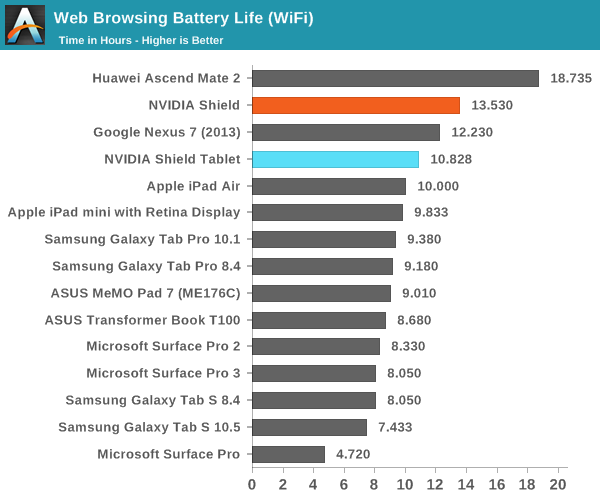
This device is a tablet first and foremost, so WiFi browsing battery life is important. In this area, the tablet does well. However, it’s a bit strange how the device performs worse than the Nexus 7 (2013). The reason why I say this is that the Tegra K1 is on a far more power efficient process (28HPm), has broadly equivalent battery capacity to screen area scaling, and should have a more power efficient display due to the reduced gamut. However, it could be that Cortex A15 just isn’t as power efficient as Krait and the silicon backplane of the display isn’t as efficient as the one in the Nexus 7.
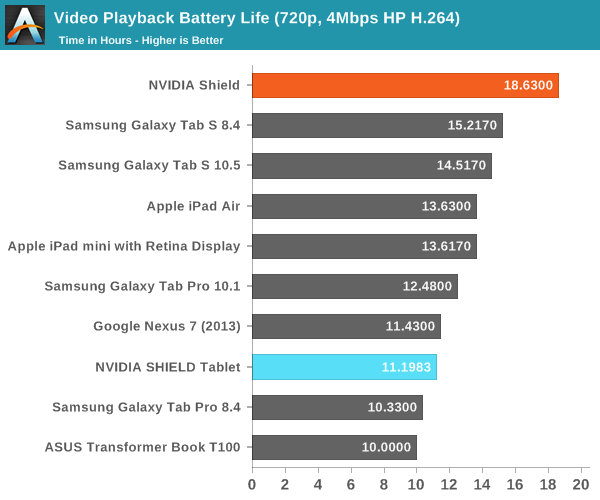
While normally web browsing tests are enough to cover the relatively low-compute use cases for smartphones, video playback is a significant use case for tablets. Here, we see that the gap between the Nexus 7 (2013) and the SHIELD Tablet narrows significantly, which can probably be attributed to the mostly display-bound nature of this test. Due to the much lower APL average of this test, we see that the Galaxy Tab S line does noticeably better in this test because their AMOLED displays mean that black-heavy content dramatically reduces power draw. This is because a black pixel in an AMOLED display is turned off and doesn't consume power, while an LCD display relies on a backlight so it isn't possible to turn off the backlight for a single pixel without turning off the entire display.

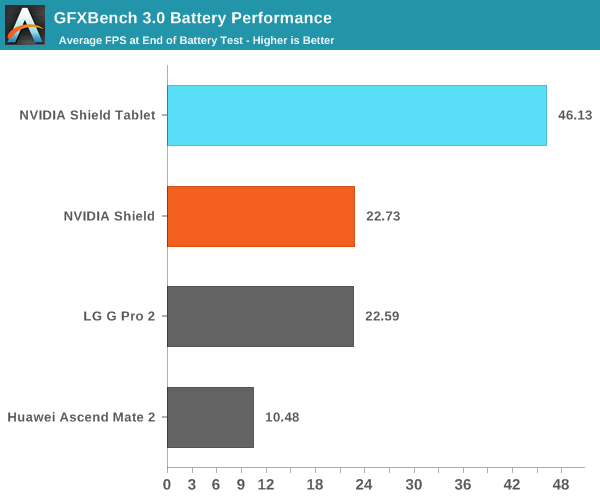
Of course, the Shield Tablet is also designed for gaming. Unfortunately, the Tegra K1 introduces quite a massive amount of dynamic range. While it’s fully possible for the Shield tablet to last 10 hours of continuous use on a single charge, running the GPU at full blast gives battery life similar to a gaming laptop. Realistically, if a game is made for Tegra K1 and truly stretches the GPU to the limit, battery life is only around two and a half hours, assuming display brightness is kept down to 200 nits. Of course, anything less intensive will do much better.
NVIDIA has also made it possible to cap the maximum frame rate and clock speed for better battery life. However, it’s quite clear in this test that the tablet isn’t capable of sustaining peak performance the way the Shield portable was, as the Shield portable sustained around 90% of the first run performance while the tablet sustained around 80% of its first run performance. The Shield Tablet also has noticeably higher skin temperatures, although this was a subjective observation.


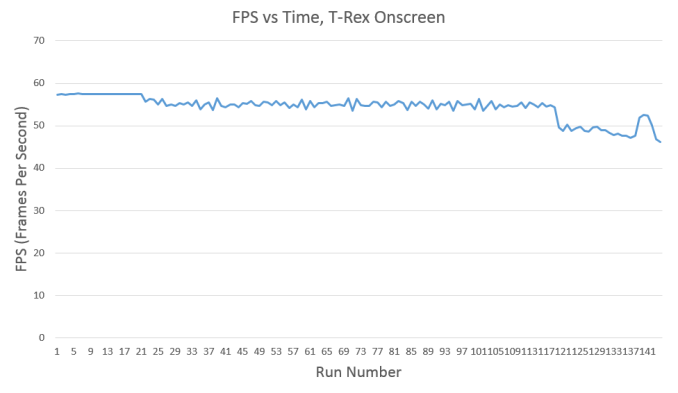
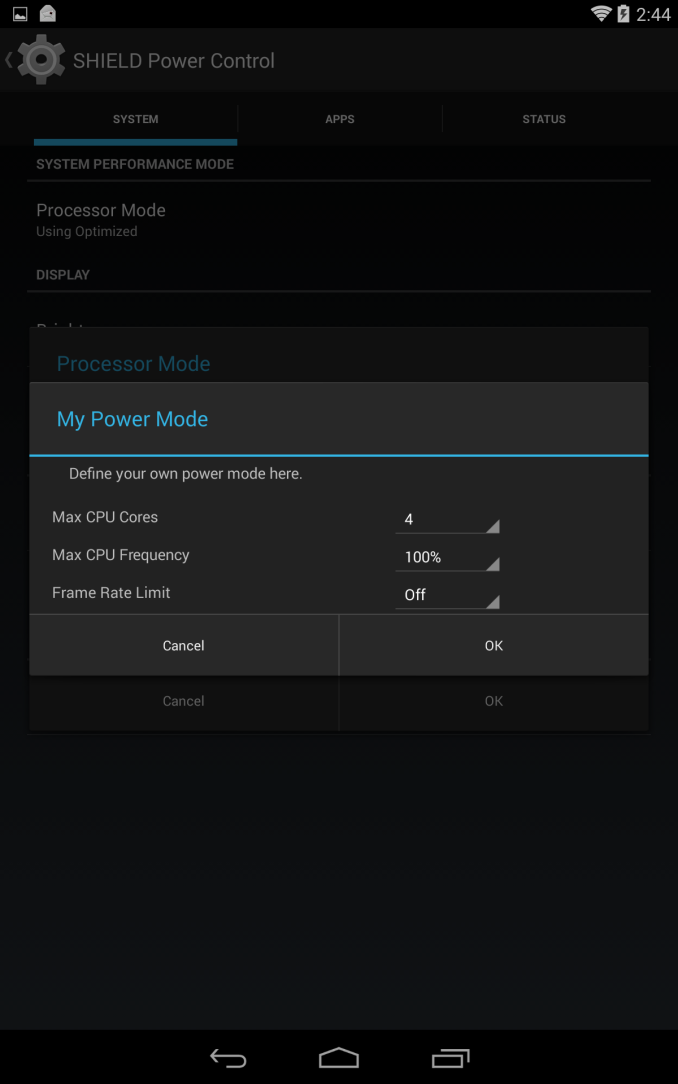
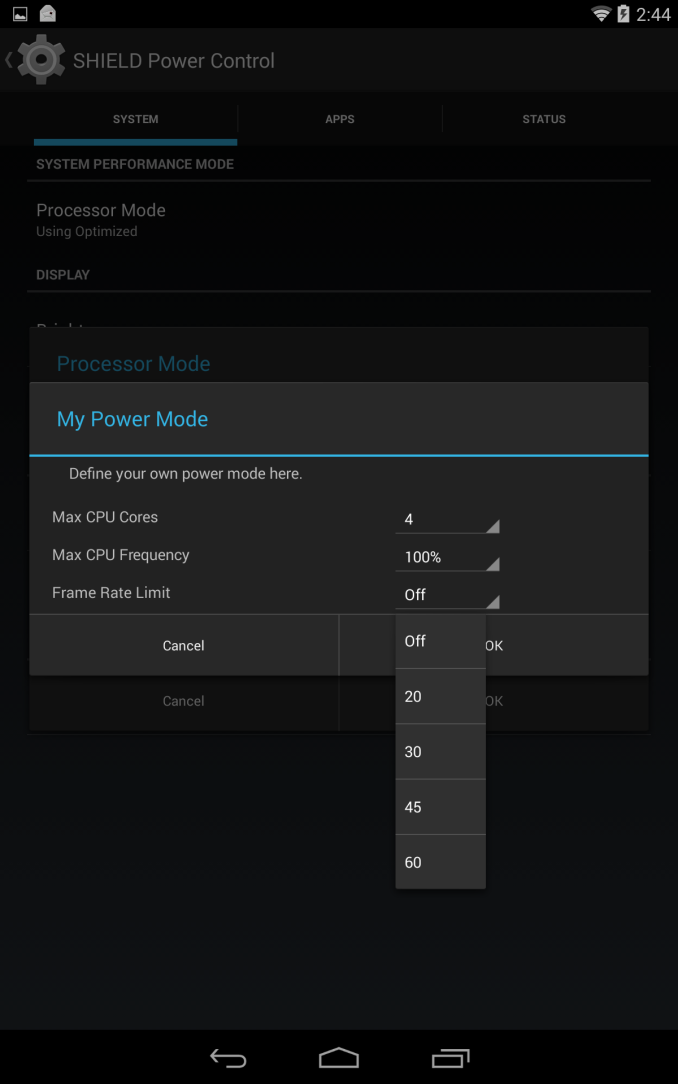








174 Comments
View All Comments
fivefeet8 - Tuesday, July 29, 2014 - link
Maybe if Nvidia made a gamepad that was attachable to the Tablet and with good weight distribution. But then the Tablet is much larger though.tipoo - Tuesday, July 29, 2014 - link
I'm very curious to see the K1 version with two Denver CPU cores instead of four Cortex A15s.MonkeyPaw - Tuesday, July 29, 2014 - link
"There are still frame drops involved in scrolling through lists and similar areas where Android has traditionally struggled to stay smooth, but Android L should fix this issue for the most part."I chuckled when I read this. How many versions of Android have promised smooth UI frame rates? Since 4.1?
MS could get Tegra3 to smooth-scroll Windows!
CharonPDX - Tuesday, July 29, 2014 - link
Wow. When your "final words" section begins with "If I’m honest, it’s hard for me to review tablets... ... I’ve never really found a use for them." then I have to ask, why are you reviewing it?Shouldn't someone else at Anand be doing this review?
DarkStryke - Tuesday, July 29, 2014 - link
You hit it around here. Many of the non-Anand reviews the last while have been pretty average at best.bigstrudel - Tuesday, July 29, 2014 - link
Qualcomm has met its match here. That's what they get for leaning on Krait so long.fivefeet8 - Tuesday, July 29, 2014 - link
Qualcomm makes good SOC's but unfortunately their drivers suck in comparison. Hopefully they've increased investment on that part with their new Adreno 420.kgh00007 - Tuesday, July 29, 2014 - link
It's a pity that the review wasn't done by somebody who actually likes tablets or uses one daily to give a more subjective opinion, based on the fact that they actually use a tablet.For me I use one every day, mainly for reading articles like this on the web, the nexus 7 2013 is a perfect device for that sort of useage.
It's also a pity that the screen does not match up to the nexus 7 2013, I don't want to buy a tablet with a lesser screen regardless of specs!
Thanks for the review though!
name99 - Tuesday, July 29, 2014 - link
Why do you need a camera for "Twitch streaming"? Isn't the whole point of twitch streaming that you see what's happening on the TABLET?Is there something I'm missing here?
fivefeet8 - Tuesday, July 29, 2014 - link
It does both at the same time. It records what's on the Tablet and has a Pic-n-Pic of the camera video.